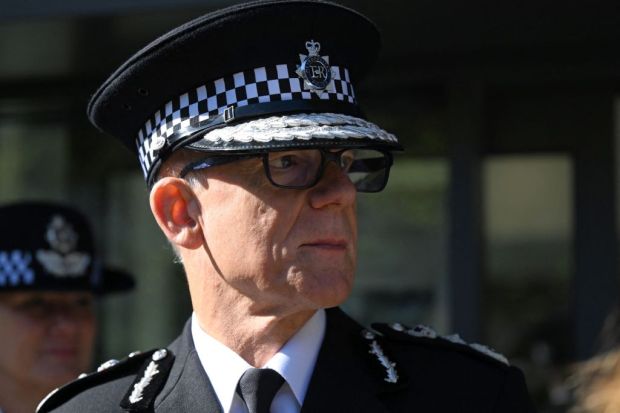The dead in the ground and those who put them there in the name of ideology do not rest easily in Ireland. The Glasnevin cemetery in Dublin was recently forced to close its wall of remembrance to those who died in the Easter rising of 1916 because of relentless vandalism. In previous attacks the wall had been smashed with sledgehammers and in 2017 paint was thrown over it.
What drove this constant destruction? It seems it was targeted because the attackers could not tolerate the presence of the names of British soldiers on the wall. These soldiers had died alongside republican rebels and civilians in the five days of insurrection that gave birth to the modern Irish state.
It is worth noting that the wall was designed as a ‘necrology’ – its purpose was to simply name the dead without putting any political spin on their memory. It was designed on the same basis as the Ring of Remembrance at Ablain-Saint-Nazaire in France which remembers 580,000 soldiers, victors and vanquished alike, killed in world war one. In Ireland it seems WB Yeats’s observation of ‘great hatred, little room’ still holds sway beyond the grave.
Was its closure a craven surrender to intolerance or gross insensitivity to a sacred cause? Unionists and not a few constitutional nationalists saw the closure of the memorial as an illustration of the way a future united Ireland would accommodate people’s British identity. And no political party has made unionists worry more than Sinn Fein. After the cemetery was closed, the Sinn Féin politician Violet-Anne Wynne welcomed the decision, saying the wall ‘commemorated a war that wasn’t ours.’
Ireland’s largest north-south party has had a complicated relationship with reconciliation, to put it mildly. But the political descendants of the IRA – who carved out a special place of horror in the minds of the people they terrorised for 30 years – are often much better at trying to weaponise their bloody past.
With elections on the horizon in the North and South, and with Sinn Fein well placed for government in both jurisdictions, you can expect to hear more bromides from the party about how Unionists will be welcomed and cherished in a united 32-county Irish socialist utopia. But can these assurances be trusted? The anniversary of the dog catcher and the terrorist is a useful if depressing guide.
Just over 30 years ago, a man who I knew as a neighbour, Eric Glass, was working as the council dog warden for Fermanagh district council. In his spare time he was also a part time corporal in the UDR, the locally recruited British army regiment whose main role was to support the police in counter terrorist operations. This was enough for republican terrorists to target him for execution as they had done on countless occasions with other members of the protestant minority in this border country – where part time police officers and soldiers in civilian roles were the softest of targets.
Four terrorists armed with a variety of weapons, including assault rifles, waited to murder Mr Glass, concealed in a lane near a lonely border cottage. They had lured him to his death on the pretext of reporting a dangerous dog on the loose. By 1992 this set up was a grotesquely routine business for sectarian murderers where I grew up. The killers included Joe McManus, 21, from Sligo over the border who ran towards Mr Glass’ van with a revolver. Despite being ambushed, outnumbered, outgunned and his legs subsequently riddled with bullets, Glass struck back with his personal protection weapon. He shot McManus dead and wounded and eventually drove off his remaining executioners. For this act of heroism, he was awarded the Distinguished Conduct Medal by the Queen, a decoration ranking just below the Victoria Cross.
A few days ago, Orga Sinn Fein, the party’s official youth wing, described this incident in these terms:
‘On the 1992 anniversary Volunteer Joe MacManus was killed on service. He was involved with the IRA Brigade of Sligo and was killed after a shootout in Belleek. We honour this young man’s sacrifice in the struggle for Irish freedom.’
It is hard to reconcile this putrid agitprop with reality but it is revealing nonetheless. It shows that the chain of nativist bigotry that connects the dead of the Easter rising to the dead of the Troubles is still intact. Those chains bind Sinn Fein to a bloody past however many warm references to ‘our Unionist brothers and sisters’ is dispensed by its notional leadership.
Its leadership is notional – just ask the police forces North and South of the border. The IRA’s army council still reportedly calls the shots, which illustrates the difficulty modern Sinn Fein has when trying to dispense with its murderous Siamese twin. You can be forgiven for having no sympathy for this predicament.
It is hard work trying to spin the countless assassinations of protestant victims into a virtue but someone has to do it. Often the party’s members ‘refuse to apologise’ for lionising people who in any other context would be seen as mere psychopaths or serial killers.
It is this refusal to understand, much less care about the harrowing toll cowards like McManus and his ilk unleashed on my community that sticks in the craw. Northern Ireland’s obese and ethically bed ridden human rights industry underwritten by the state has no time to focus on this. Their craven silence, their focus on the behaviour of the state, responsible for only 10 per cent of Troubles deaths, the majority absolutely justified, reveals their complicity in the revisionism of the past.
To paraphrase Stalin, Joe McManus’s death was a tragedy for his family but the deaths of dozens of the protestant minority community in the border country he and his grouping terrorised are mere statistics.
So when Sinn Fein celebrate the destruction of tolerance in Glasnevin cemetery and continue to worship the terrorists who perverted the legacy of the Easter Rising by executing Irish men, women and children on their doorsteps, in their farmsteads, at their places of work and worship, they are showing us who they really are. They reveal how they would act towards a minority community in the event their vision of a united Ireland is achieved. If you’re interested in a reconciled future, it’s not a pretty sight.
Got something to add? Join the discussion and comment below.
Get 10 issues for just $10
Subscribe to The Spectator Australia today for the next 10 magazine issues, plus full online access, for just $10.


















Comments
Don't miss out
Join the conversation with other Spectator Australia readers. Subscribe to leave a comment.
SUBSCRIBEAlready a subscriber? Log in